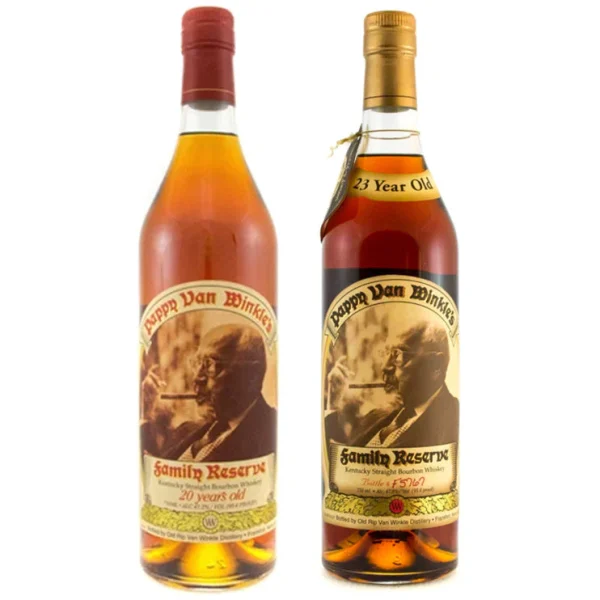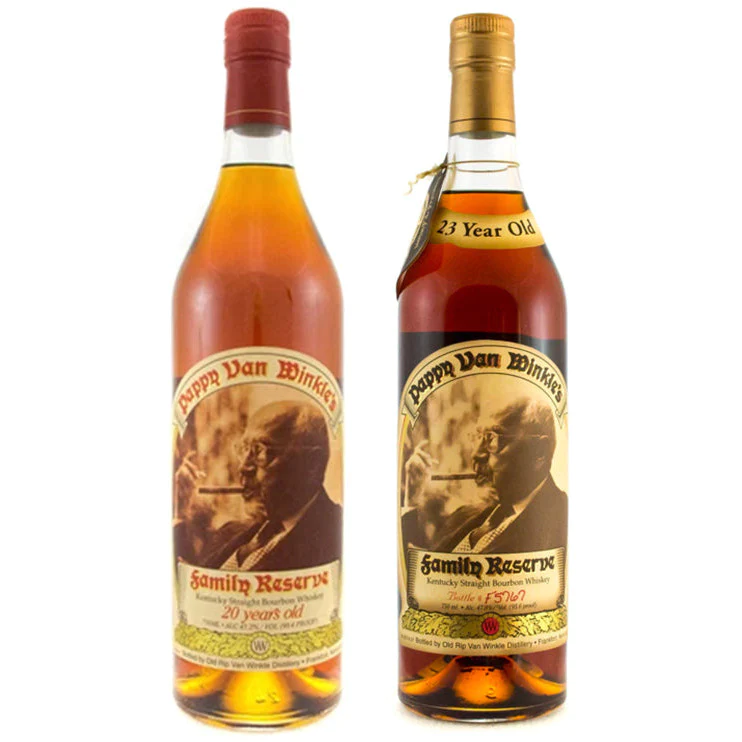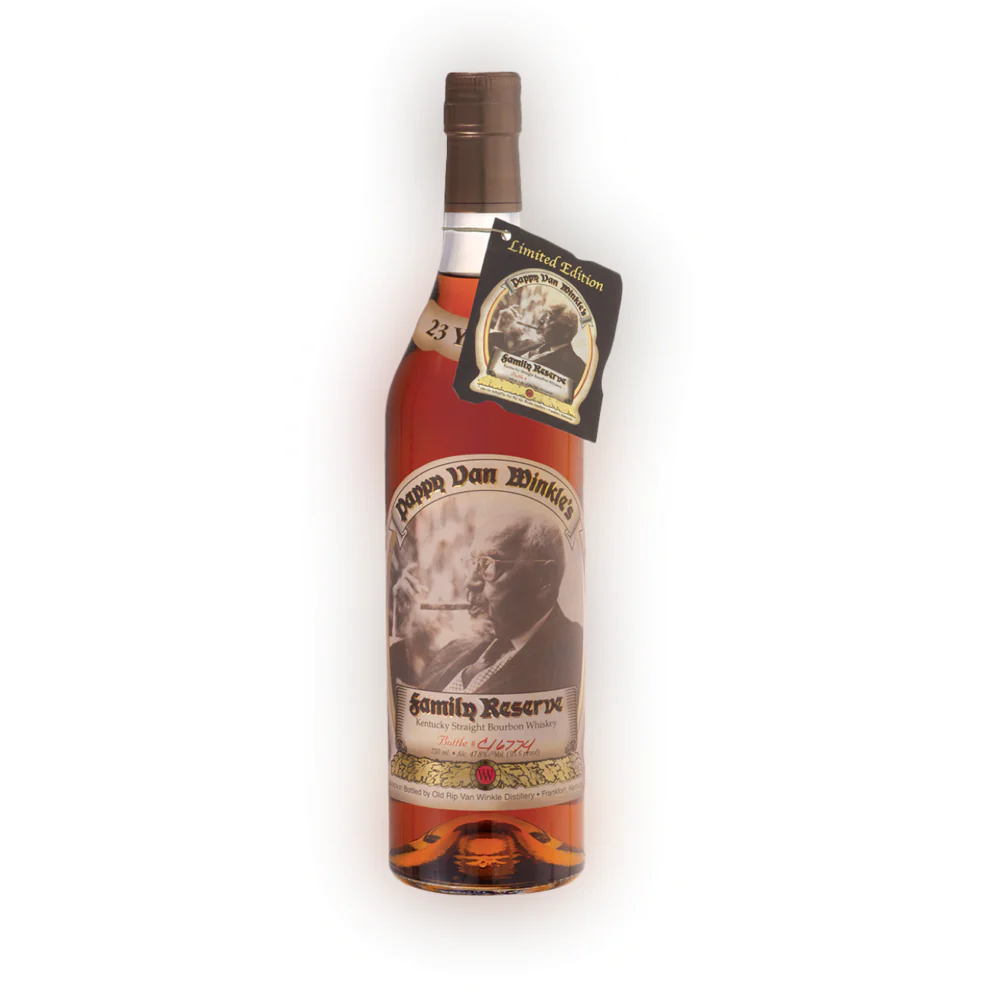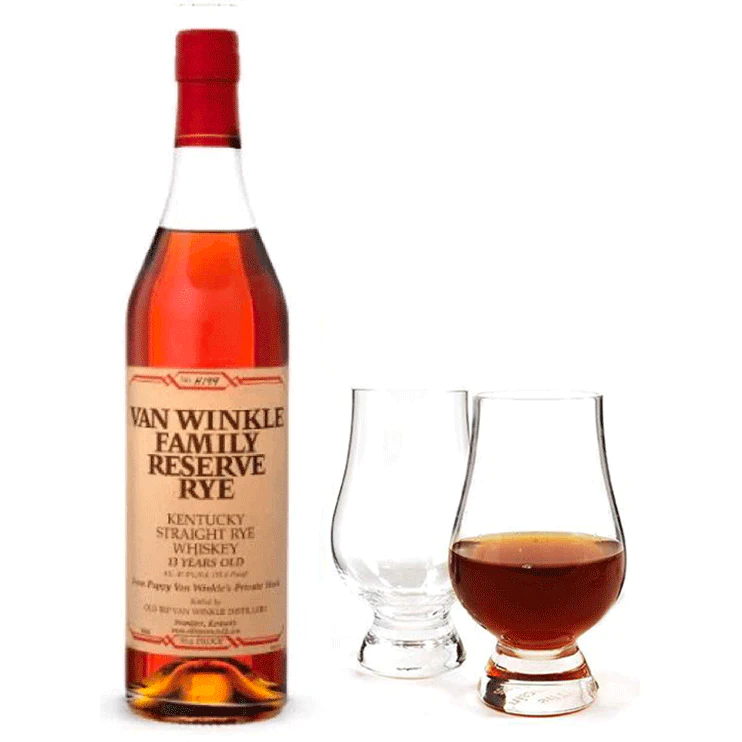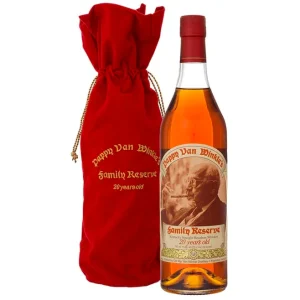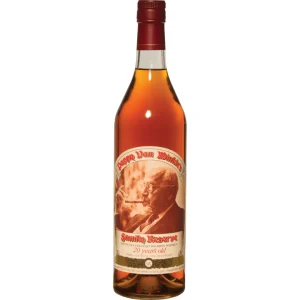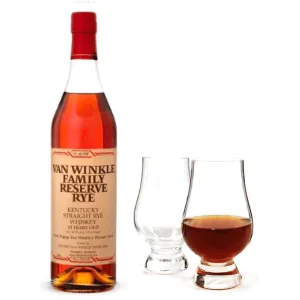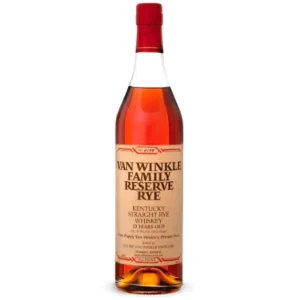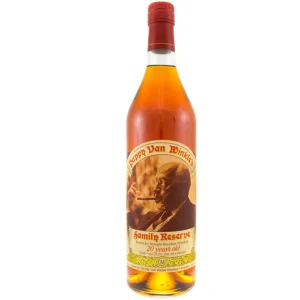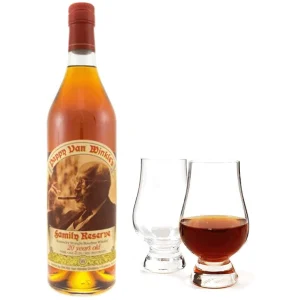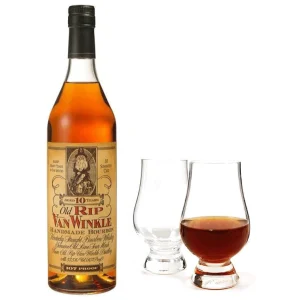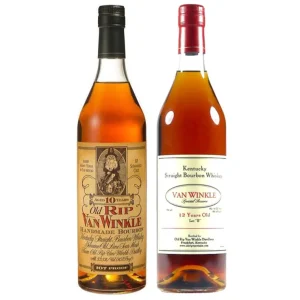- Description
Description
This very sought-after collection of Pappy Van Winkle’s bourbon is a must have for the discerning whiskey drinker who won’t settle for less than an excellent American whiskey. Van Winkle’s bourbons are aged longer than most, and the result is “a superior sweeter and smoother flavor.”
Included in this Collection:
Pappy Van Winkle’s 20 Year Family Reserve
Pappy Van Winkle 20 Year Kentucky Straight Bourbon Whiskey
The #1 rated Bourbon Whiskey in the world with a 99 out of 100 rating by the World Spirits Championship. This bourbon is aged 20 years and bottled at 90.4 proof for a wonderfully smooth and rich profile. Pappy Van Winkle was a true character and like its namesake, this bourbon whiskey is full of character – quite a remarkable whiskey.
Pappy Van Winkle 20 Year Bourbon is intense and tantalizing. Pappy 20 Year’s taste is smooth with a citrus zest note. You will find some sherry notes, dried fruits and vanilla in this bourbon whiskey. The finish is long and elegant, true to Pappy Van Winkle’s Bourbon.
Pappy Van Winkle’s 23 Year Family Reserve
This very rare, limited edition bourbon takes generations of distilling know-how to produce. Only the most careful and expensive distilling method can be used to create a whiskey as special as this one. Each barrel ages for 23 years and is carefully selected from the heart of the warehouse. This whiskey should be enjoyed neat.
Pappy Van Winkle Reserve 23 Year bourbon has early aromas of caramel and cream with soft notes of oak, nuts and leather. This American bourbon features a sweet taste composed of vanilla, maple and honey joined by complimentary flavors of citrus and spice. as a long-lasting oaky finish, along with many of the early flavors.
Van Winkle Bourbons pay homage to one of the whiskey industry’s founding fathers. This bottling is a real treat for any rye whiskey lover and a truly monumental American whiskey experience. Distilled in the heart of Kentucky, at the Buffalo Trace Distillery.
All items will be shipped together.
Old Rip Van Winkle Distillery
Pappy began working at W.L. Weller & Sons first as a traveling whiskey salesman and eventually as the President of Stitzel-Weller Distillery. He helped shape the industry during and after Prohibition. Through his endeavors in the warehouse, the boardroom and on the road, he built a reputation in the bourbon industry that was second to none. Fine bourbon was his mission, and he accepted nothing less.
Pappy’s son, Julian Jr., operated the distillery from 1964 until the family sold it in 1972. After, not one to be defeated, he got himself an office and a secretary and formed a company called J.P. Van Winkle and Son. He got into marketing bourbon through many types of commemorative decanters, some of the more popular being for universities. But he never stopped bottling on the side. He created the Old Rip Van Winkle label as a side venture in case his son, Julian III, wanted to come into the business.
Julian III took over the business in 1981 after his father passed away. He was 32 years old with a wife and four young children. The premium bourbon business was in a lull, but 90 years ago, Pappy started from the ground up, too. So, with this same, innate passion, Julian purchased the Old Hoffman Distillery in Lawrenceburg, Kentucky, for barrel storage and bottling purposes. He couldn’t afford much advertising, but the quality of Old Rip Van Winkle sold itself. Julian III and his impeccable palate created quite a stir.
When first approached by Buffalo Trace, Julian III was honored, but not immediately interested. He had ample bourbon aging, but the concern was for future reserves, since by this time, bourbon was increasing in popularity. Buffalo Trace bought the W.L. Weller label in 1999 and had been making the bourbon with nearly the same recipe as Pappy’s. The transition was easy. As of May 2002, Buffalo Trace has produced the Van Winkle bourbons, using Pappy’s exact recipe. This change allows Old Rip Van Winkle to maintain their strict quality standards while producing more barrels for future enjoyment.
